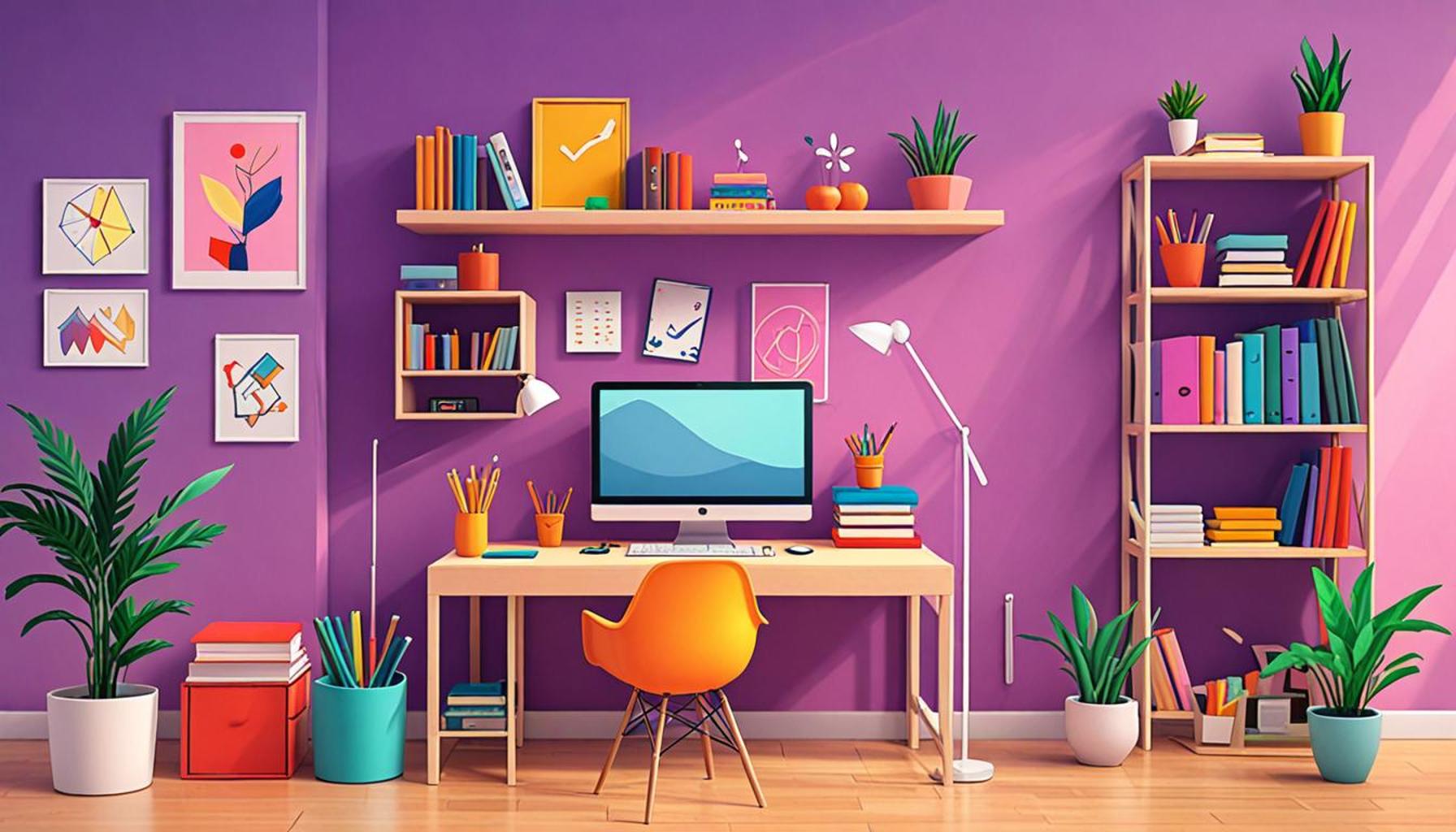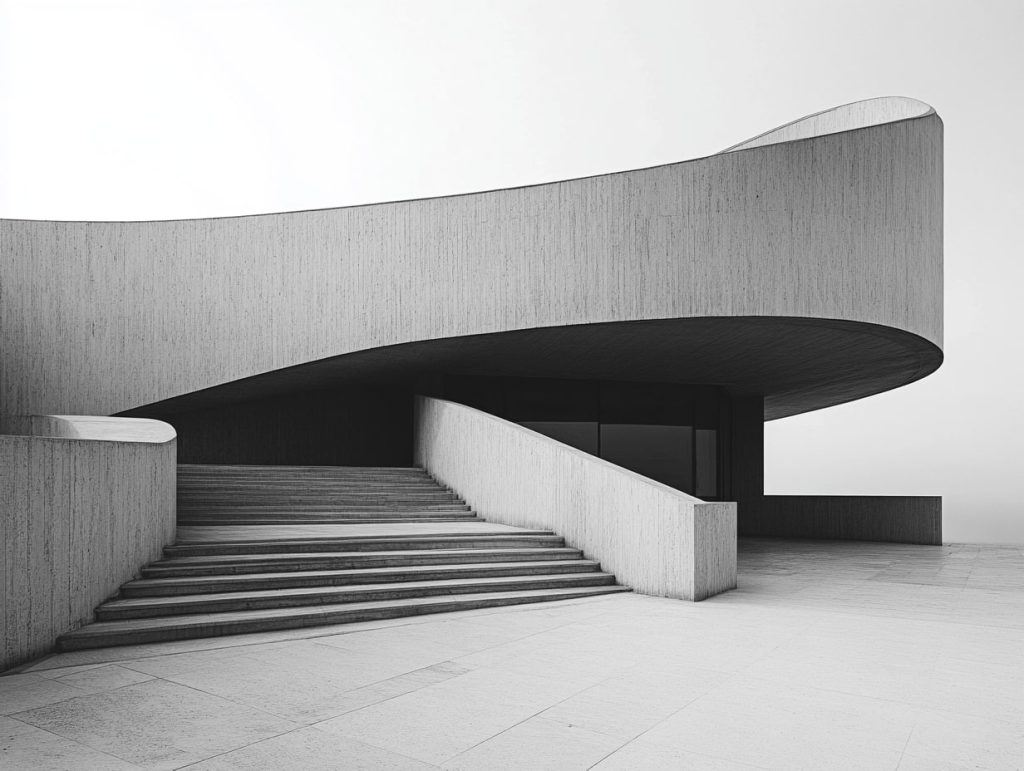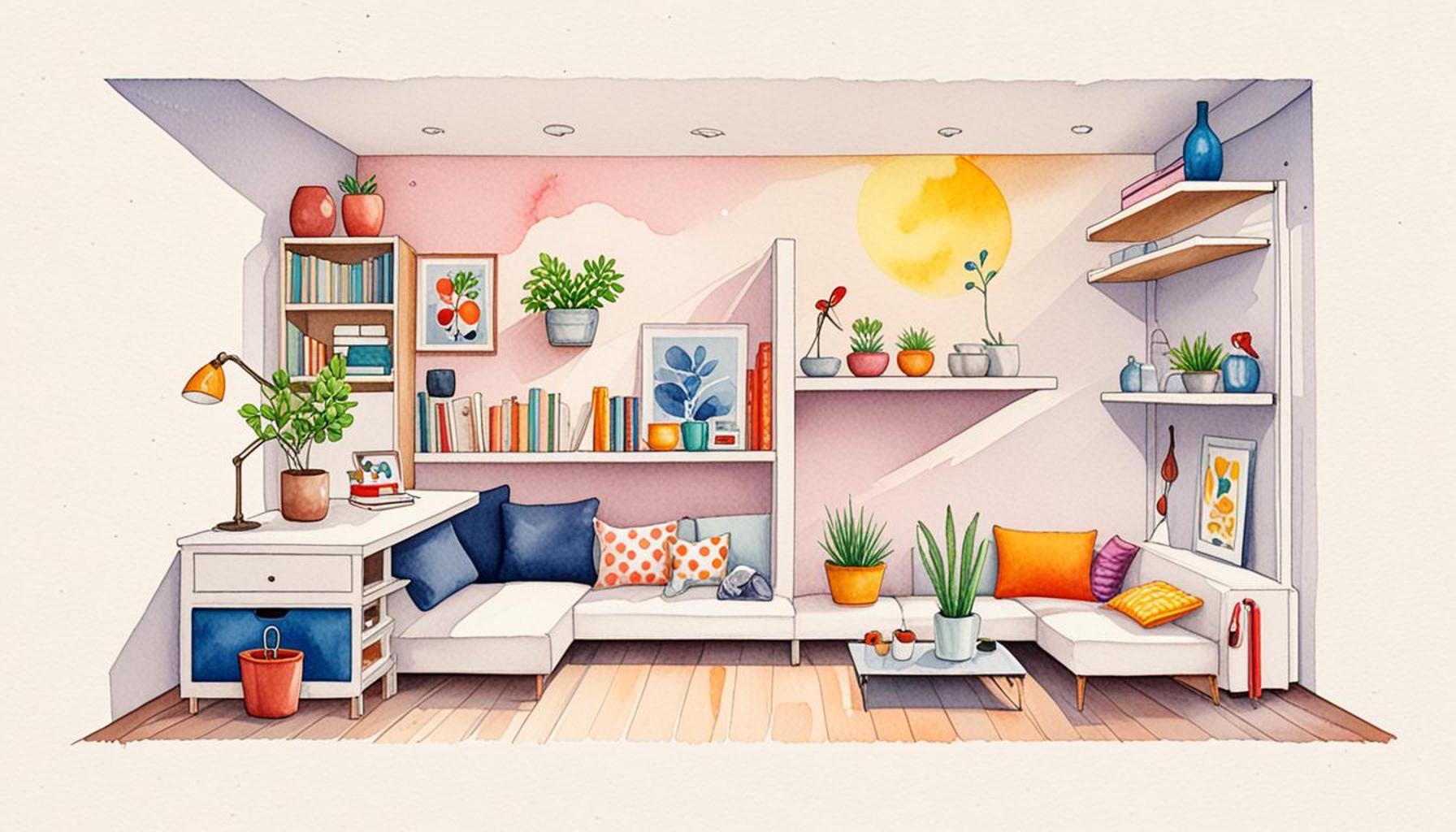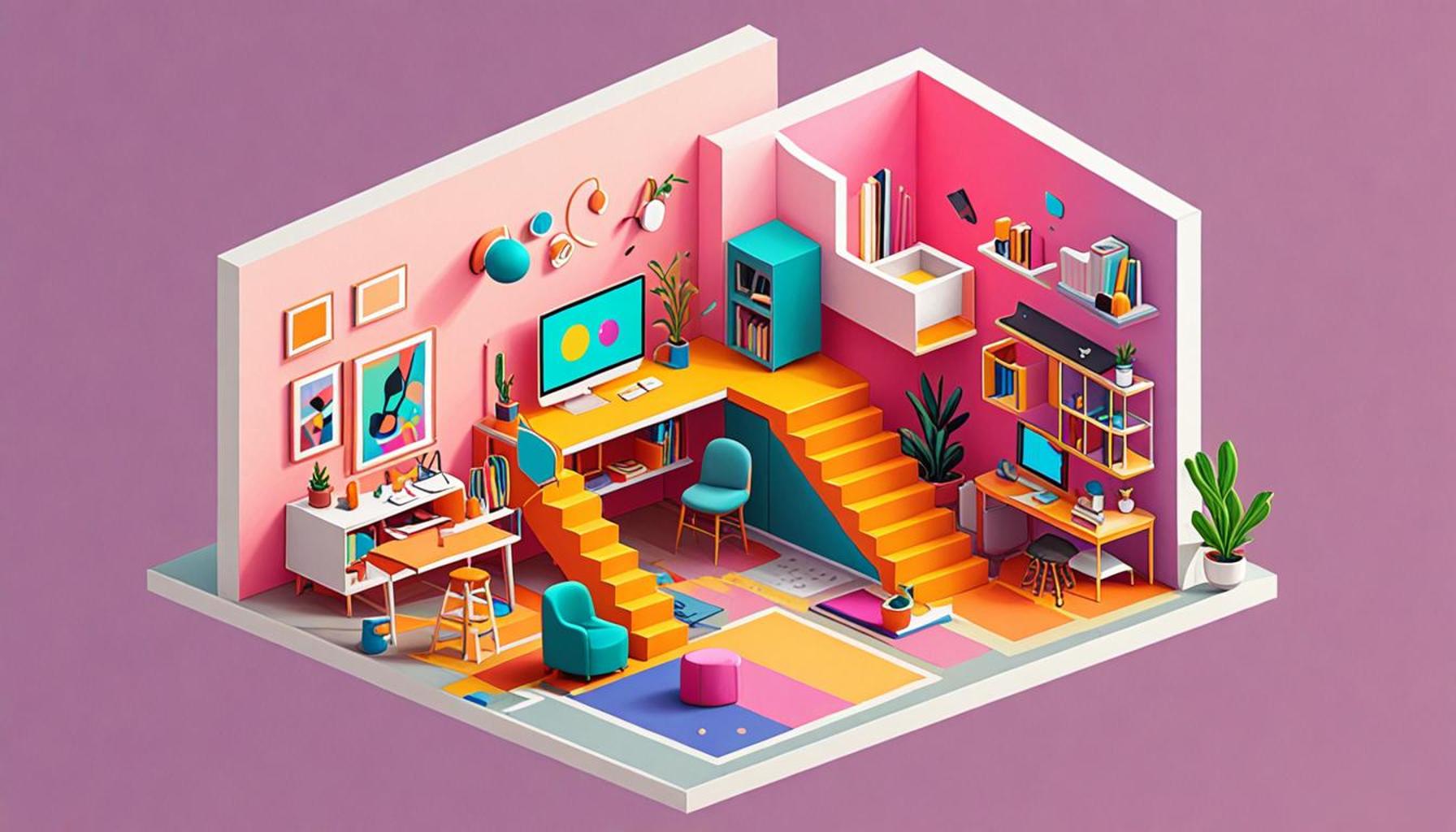Spatial Efficiency in Study Environments: How Minimalism Can Enhance Productivity and Comfort

Transforming Study Environments
In an age where distractions are abundant, creating a conducive study environment is crucial for maximizing productivity and comfort. The concept of spatial efficiency emerges as a practical approach, wherein minimalist design plays a pivotal role. By simplifying the study space, individuals can not only enhance their focus but also cultivate a sense of calm.
Why Embrace Minimalism?
Minimalism offers a myriad of benefits that cater to both the mental and physical aspects of studying. First and foremost, it fosters decluttered spaces, which reduce visual distractions, a crucial factor for anyone struggling to maintain concentration amid the chaos of daily life. A study by psychologists at the University of California found that an organized environment allows for improved cognitive performance, indicating that cleanliness translates directly to mental clarity.
Additionally, incorporating functional furniture promotes not only comfort but also encourages good posture. Ergonomic chairs and height-adjustable desks can enhance the studying experience, reducing the physical strain associated with long periods of sitting. For instance, the popular standing desk solution allows students or professionals to shift positions throughout the day, facilitating better energy levels and focus.
The use of neutral color palettes further contributes to the serene atmosphere conducive to concentration. Colors like light gray, soft beige, and muted greens are scientifically proven to promote calmness and reduce anxiety, creating a perfect backdrop for intensive study sessions. According to color psychology, these hues can help stabilize mood and provide a peaceful environment that is essential for effective learning.
Studies indicate that a well-organized study environment can significantly boost academic performance. This leads to pertinent questions about how creating a minimalistic space can yield tangible benefits in productivity and overall comfort. The conclusion is clear: a clutter-free, thoughtfully designed environment lays the groundwork for success in learning endeavors.

Exploring Practical Applications
Whether you’re a student tackling final exams or a professional pursuing continued education, understanding the principles of spatial efficiency can revolutionize your study routine. Simple steps, such as removing unnecessary items from your desk or organizing materials into designated storage, can make a significant impact. The idea is to create a space that inspires rather than distracts.
Consider implementing elements like natural lighting, which not only enhances mood but also increases energy levels. Using soft, indirect lighting in the evening can help signal to the body that it is time to focus or relax, depending on the time of day.
Explore how incorporating minimalism into your study environment can enhance your focus and increase comfort levels. Perhaps invest in multi-functional decor that adds personal flair without cluttering your space, such as a single, well-placed plant or an art piece that resonates with you. By harmonizing your physical environment with your educational ambitions, you pave the way for a more productive and fulfilling study experience.
DIVE DEEPER: Click here to uncover effective strategies
Transforming Study Environments
In an age where distractions are abundant, creating a conducive study environment is crucial for maximizing productivity and comfort. The concept of spatial efficiency emerges as a practical approach, wherein minimalist design plays a pivotal role. By simplifying the study space, individuals can not only enhance their focus but also cultivate a sense of calm.
Why Embrace Minimalism?
Minimalism offers a myriad of benefits that cater to both the mental and physical aspects of studying. First and foremost, it fosters decluttered spaces, which reduce visual distractions, a crucial factor for anyone struggling to maintain concentration amid the chaos of daily life. A study by psychologists at the University of California found that an organized environment allows for improved cognitive performance, indicating that cleanliness translates directly to mental clarity.
Additionally, incorporating functional furniture promotes not only comfort but also encourages good posture. Ergonomic chairs and height-adjustable desks can enhance the studying experience, reducing the physical strain associated with long periods of sitting. For instance, the popular standing desk solution allows students or professionals to shift positions throughout the day, facilitating better energy levels and focus.
The use of neutral color palettes further contributes to the serene atmosphere conducive to concentration. Colors like light gray, soft beige, and muted greens are scientifically proven to promote calmness and reduce anxiety, creating a perfect backdrop for intensive study sessions. According to color psychology, these hues can help stabilize mood and provide a peaceful environment that is essential for effective learning.
Studies indicate that a well-organized study environment can significantly boost academic performance. This leads to pertinent questions about how creating a minimalistic space can yield tangible benefits in productivity and overall comfort. The conclusion is clear: a clutter-free, thoughtfully designed environment lays the groundwork for success in learning endeavors.
Exploring Practical Applications
Whether you’re a student tackling final exams or a professional pursuing continued education, understanding the principles of spatial efficiency can revolutionize your study routine. Simple steps, such as removing unnecessary items from your desk or organizing materials into designated storage, can make a significant impact. The idea is to create a space that inspires rather than distracts.
- Eliminate non-essential items from your workspace
- Invest in quality, multi-functional furniture
- Utilize organizers and storage solutions to keep materials in their place
- Incorporate plants or artwork that resonate with you
Consider implementing elements like natural lighting, which not only enhances mood but also increases energy levels. Using soft, indirect lighting in the evening can help signal to the body that it is time to focus or relax, depending on the time of day.
Explore how incorporating minimalism into your study environment can enhance your focus and increase comfort levels. Perhaps invest in multi-functional decor that adds personal flair without cluttering your space, such as a single, well-placed plant or an art piece that resonates with you. By harmonizing your physical environment with your educational ambitions, you pave the way for a more productive and fulfilling study experience.
| Advantages | Impact on Study Environments |
|---|---|
| Decluttered Spaces | Minimalism promotes clear workspaces, allowing students to focus without distractions. |
| Enhanced Focus | A minimal setup can lead to improved concentration, thereby increasing overall productivity. |
| Improved Comfort | Fewer items in a study area enhance ergonomics, leading to a more pleasurable learning environment. |
| Flexibility | Less clutter allows for spatial reconfiguration, catering to different study styles and needs. |
Minimalism in study environments isn’t just about aesthetics; it’s a profound approach that results in tangible benefits. For instance, a decluttered space not only enhances focus but also minimizes mental strain. This concept of spatial efficiency ensures that each item in the environment serves a purpose, making the space functional yet inviting. Furthermore, comfort is significantly increased through a minimalist design, as it often allows for better ergonomics, which is crucial during prolonged study sessions. The flexibility gained from a minimalist setup means that students can quickly adapt the space to fit their changing needs, whether it’s for group study or solo focus.The effective implementation of minimalism in study areas can therefore transform ordinary environments into highly productive sanctuaries for learning. This approach invites students to explore and discover methods that enhance their overall study experience, prompting deeper engagement with the material and increasing retention of information.
DISCOVER MORE: Click here to delve deeper
Maximizing Functionality Through Design
The interplay between design and functionality is central to creating a study environment that truly supports learning. A minimalist approach emphasizes the value of intentional design elements that serve dual purposes, enhancing not only the aesthetic appeal of your workspace but also its overall productivity. In practical terms, this may involve selecting furniture that meets multiple needs, such as a shelf that seamlessly converts from a bookcase to a study surface.
Technology plays a significant role in enhancing spatial efficiency in study environments. By integrating smart technology, such as adjustable lighting systems, automated blinds, and noise-cancelling devices, individuals can tailor their surroundings to fit their preferences and studying habits. For example, smart lights that mimic natural daylight can help regulate the body’s circadian rhythm, promoting alertness during long study sessions.
Another aspect worth considering is the incorporation of zoning within a study space. By defining specific areas for different tasks, such as reading, writing, or digital learning, you can psychologically signal your brain to shift focus appropriately. This can be as simple as using rugs or dividers to differentiate areas, promoting a sense of order that aligns with minimalistic principles. Research indicates this approach not only enhances productivity but also sustains motivation by limiting the overwhelming feeling of working within a single, chaotic environment.
Soundscapes and Their Impact on Focus
As many students can attest, sound plays a pivotal role in study environments. The concept of sonic minimalism—reducing unnecessary noise levels and curating beneficial soundscapes—can create a more effective and enjoyable study atmosphere. White noise machines or specific playlists designed for concentration can drown out distracting background sounds, thus allowing for deeper focus. According to a study published in the journal *Psychological Science*, ambient sounds at moderate levels can enhance creativity and improve complex problem-solving performance.
Importantly, the physical arrangement of your study space matters as well. The placement of furniture can significantly influence how a space feels and functions. For instance, ensuring that the desk faces a window—without obstructive decor—can enhance natural light intake while providing a visual break during intensive study sessions. The orientation of your workspace can either foster a connection with nature or create barriers, affecting cognitive function and well-being.
Personalization Without Clutter
While minimalism encourages a clean slate, it does not mean sacrificing personal expression within your study space. Striking a balance between personalization and simplicity can elevate motivation. Consider items that resonate with your identity or aspirations, such as a single framed photo, an inspiring quote on a small board, or a well-maintained plant. The key is selecting a few meaningful elements that can comfortably coexist without overwhelming the space.
Ultimately, the minimalist approach extends beyond mere aesthetics; it encapsulates a philosophy that emphasizes both mental clarity and physical comfort. Clarity in your study space can pave the way for clearer thoughts and enhanced retention capabilities. By transforming your study environment into a reflection of spatial efficiency, you can harness the full potential of your learning journey.
DIVE DEEPER: Click here to discover more
Conclusion: Embracing Minimalism for Enhanced Productivity
In an era where distractions abound and the pressure to perform academically is ever-increasing, the importance of creating an optimized study space cannot be underestimated. By embracing minimalism in study environments, individuals can achieve a remarkable transformation that promotes both productivity and comfort. The intentional selection of functional design elements not only streamlines the workspace but also allows learners to focus with clarity, harnessing the full potential of their learning experiences.
Furthermore, the integration of smart technologies and the establishment of distinct zones for various tasks serve to further elevate the effectiveness of the study environment. With a focus on sonic minimalism and thoughtful furniture arrangement, students can cultivate an atmosphere that fosters concentration and creativity. This strategic approach to spatial efficiency encourages a mindset that embraces order and simplicity, setting the stage for optimal cognitive performance.
Finally, personalization within the minimalist framework ensures that study spaces are not only efficient but also reflective of individual identity and motivation. By thoughtfully curating a few meaningful items, students can instill a sense of ownership and inspiration in their environment, motivating them to engage deeply with their studies. As a result, adopting minimalist principles not only enhances the physical space but yields profound benefits for overall mental well-being.
In conclusion, creating a study environment that embodies spatial efficiency through minimalism stands as a powerful strategy for enhancing productivity and comfort. As you reimagine your workspace, consider how these principles can support your academic journey and inspire a lifetime of effective learning.


